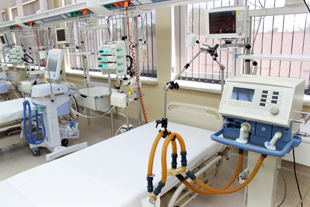 By providing the uninsured with better access to primary care and expanding Medicaid coverage, it was expected that Obamacare would reduce overcrowding in the emergency room (ER). However, a recent report published in The Courier-Journal reveals that ER visits actually increased after the implementation of the Affordable Care Act (ACA). It says that hospital officials are helping patients to find primary care physicians, which may lessen the visits eventually. However, the crowding and wait time may increase in the meantime, making it difficult for the authorities to control Medicaid costs.
By providing the uninsured with better access to primary care and expanding Medicaid coverage, it was expected that Obamacare would reduce overcrowding in the emergency room (ER). However, a recent report published in The Courier-Journal reveals that ER visits actually increased after the implementation of the Affordable Care Act (ACA). It says that hospital officials are helping patients to find primary care physicians, which may lessen the visits eventually. However, the crowding and wait time may increase in the meantime, making it difficult for the authorities to control Medicaid costs.
The rising number of ER visits is also increasing pressure on ER physicians. In addition to accurately diagnosing the condition and prescribing the right treatment options and care, they need to ensure proper documentation to ensure reimbursement and compliance. Many rely on professional help to transcribe medical reports.
As per the news report, one of the largest hospitals in Kentucky saw an increase of 12 percent in the number of ER visits, many of which weren’t true emergencies. Health care experts put forward the following reasons for the surge in ER patients:
- Before healthcare reform, ER users were mostly Medicaid patients. As Obamacare expanded coverage to those who had been giving up care as they couldn’t afford it, the newly insured patients are flocking to ER.
- There is a shortage of primary care physicians and there are too few doctors to handle all the newly insured patients. A study found that the number of doctors needed to meet pre-ACA demand in Kentucky last year was 3,790 while it is expected that the state would need an additional 284 primary care physicians by 2017. Moreover, about one-fourth of Kentucky’s primacy care physicians are due to retire within the next five years.
- Some doctors do not accept Medicaid and poor patients cannot take time from work to go to primary care offices when they are open. At the same time, ERs operate round-the-clock and cannot refuse treatment
- Patients who have been uninsured for years do not have regular doctors and are used to ERs though care is more expensive. There are also uninsured patients who have not treated their illness and injuries, which have got worse over time and become emergencies
A poll conducted by the American College of Emergency Physicians in April 2014 show that more than half of ER doctors (51%) opined that the acuity of emergency patients’ injuries or illness remained the same since January 1, 2014 (ACA implementation date) while 86% of respondents expect an increase in emergency visits over the next three years. Though the survey shows that the majority of the respondents expect ER visits to increase under Obamacare, most (77%) said that their Emergency Department is not adequately prepared to deal with this rush.
Health care experts recommend the following solutions to bring down ER visits:
- ER staff members should educate people on when it is right to use emergency care, when they should approach immediate care centers, and when they should seek help from a doctor’s office
- Care co-ordination which involves primary care physicians working with high-risk patients to help them control their illness and navigate the health care system
- Allowing nurse practitioners practice and prescribe on their own can provide people with another treatment alternative. A new law enacted in Kentucky this year to take effect in mid-July will allow advanced-practice nurse practitioners to prescribe non-scheduled drugs without a collaborative agreement with a physician, if they have prescribed drugs under collaboration for four years
However, these efforts may not immediately reduce the number of ER visits, say experts.


